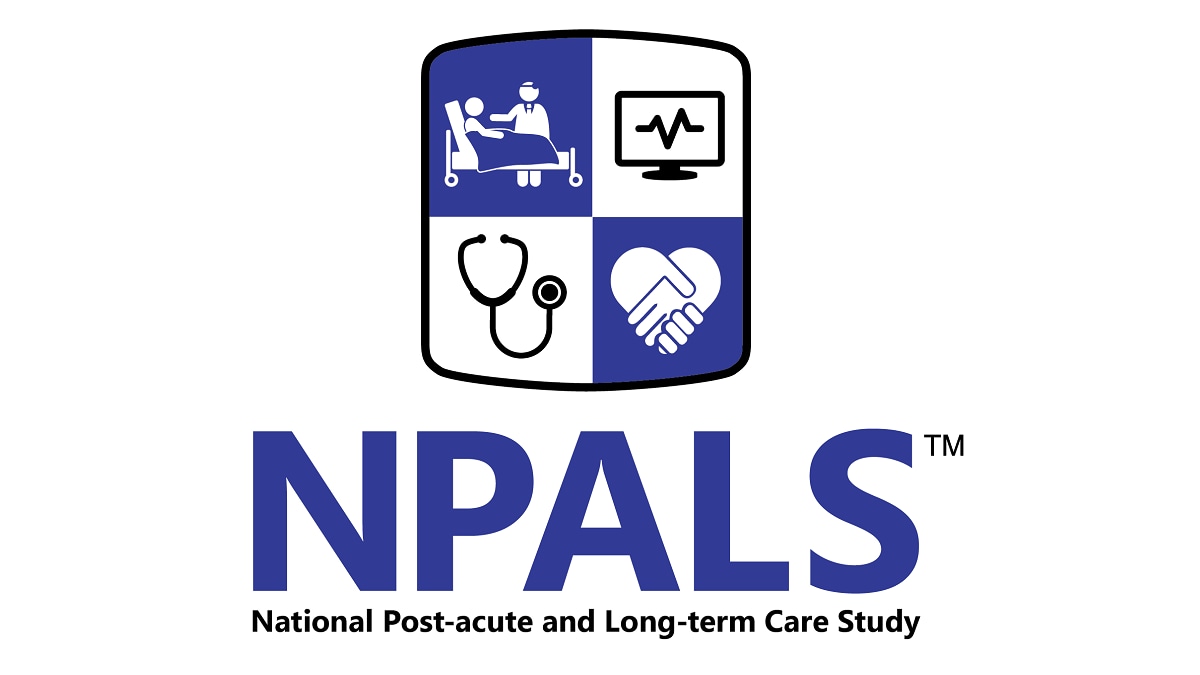At a glance
- Find reports, tables, and other publications using data from the 2016 study cycle of the National Study of Long-Term Care Providers (NSLTCP).
- Publications and resources on this page still use the retired study name: NSLTCP.
- Explore resources such as statistical reports, web tables, maps and journal articles.

Introduction
The National Post-acute and Long-term Care Study (NPALS) publishes study results and data analysis in a variety of formats. These include statistical reports, national and state estimate tables, and MMWR QuickStats.
NPALS was called the National Study of Long-Term Care Providers (NSLTCP) before 2020. Publications and resources from the 2016 study cycle use the retired name.
Get the latest updates
Join the NPALS listserv for updates, announcements and publications from the National Post-acute and Long-term Care Study.
Statistical reports and supplemental resources
- Long-Term Care Providers and Services Users in the United States: Data From the National Study of Long-Term Care Providers, 2015–2016 (02/26/2019)
- State Estimates Supplement (10/2019)
- Visual Abstract (07/2019)
- State Estimates Supplement (10/2019)
Adult Day Services Centers Survey
- Differences in Characteristics of Adult Day Services Centers, by Level of Medical Services Provision (10/23/2020)
- Service Provision, Hospitalizations, and Chronic Conditions in Adult Day Services Centers: Findings From the 2016 National Study of Long-Term Care Providers (04/30/2019)
- Advance Directive Documentation Among Adult Day Services Centers and Use Among Participants, by Region and Center Characteristics: National Study of Long-Term Care Providers, 2016 (09/12/2018)
- Variation in Adult Day Services Center Participant Characteristics, by Center Ownership: United States, 2016 (02/05/2018)
Residential Care Communities Survey
- Characteristics of Residential Care Communities by Percentage of Resident Population Diagnosed With Dementia: United States, 2016 (12/04/2020)
- Trends in Electronic Health Record Use Among Residential Care Communities: United States, 2012, 2014, and 2016 (03/03/2020)
- Variation in Residential Care Community Resident Characteristics, by Size of Community: United States, 2016 (02/05/2018)
Web tables
- Electronic Health Records and Health Information Exchange—Adult Day Services Centers and Residential Care Communities (7/2018)
- 2016 Adult Day Services Center Survey Weighted National Estimates and Standard Errors (1/2018)
- 2016 Residential Care Communities Survey Weighted National Estimates and Standard Errors (12/2017)
QuickStats
- Distribution of Long-Term Care Staffing Hours, by Staff Member Type and Sector — United States, 2016 (05/04/2018)
Adult Day Services Centers Survey
- Percentage Distribution of Adult Day Services Centers, by Type of Service — National Study of Long-Term Care Providers, 2016 (08/17/2018)
- Percentage Distribution of Adult Day Services Center Participants, by Place of Residence — National Study of Long-Term Care Providers, United States, 2016 (01/19/2018)
Residential Care Communities Survey
- Percentage of Residential Care Communities, by U.S. Census Region—National Study of Long-Term Care Providers, 2012-2016 (11/02/2018)
- Percentage of Residential Care Community Residents with a Fall, by Census Region — United States, 2016 (09/21/2018)
- Percentage of Residential Care Community Residents with an Advance Directive, by United States Census Division—United States, 2016 (07/20/2018)
- Percentage of Residential Care Communities That Use Electronic Health Records, by Census Region — United States, 2016 (06/29/2018)
- Percentage of Residential Care Communities That Use Electronic Health Records, by Community Bed Size — United States, 2016 (02/02/2018)
Journal articles
- Lendon, J.P., Caffrey, C., and Lau, D.T. (2020). Advance directives state requirements, center practices, and participant prevalence in adult day services centers: Findings from the 2016 National Study of Long-Term Care Providers, The Journals of Gerontology: Series B. DOI: 10.1177/0733464812447284 (7/2020)
Data Tell Stories. Tell Us Yours!
Has information from NPALS helped you? Your stories help us showcase the value of NPALS. Email a brief description of how you've used NPALS data to LTCSBFeedback@cdc.gov. Use "My NPALS data use example" as the subject of your message.
Content Source: